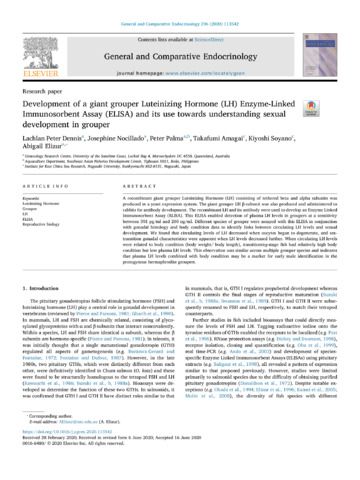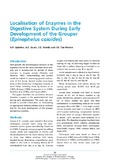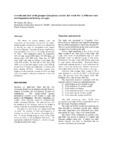Development of a giant grouper Luteinizing Hormone (LH) Enzyme-Linked Immunosorbent Assay (ELISA) and its use towards understanding sexual development in grouper
- Global styles
- MLA
- Vancouver
- Elsevier - Harvard
- APA
- Help

View/
Date
2020-07-13Author
Page views
2,352ASFA keyword
AGROVOC keyword
Metadata
Show full item record
Share
Abstract
A recombinant giant grouper Luteinizing Hormone (LH) consisting of tethered beta and alpha subunits was produced in a yeast expression system. The giant grouper LH β-subunit was also produced and administered to rabbits for antibody development. The recombinant LH and its antibody were used to develop an Enzyme Linked Immunosorbent Assay (ELISA). This ELISA enabled detection of plasma LH levels in groupers at a sensitivity between 391 pg/ml and 200 ng/ml. Different species of grouper were assayed with this ELISA in conjunction with gonadal histology and body condition data to identify links between circulating LH levels and sexual development. We found that circulating levels of LH decreased when oocytes began to degenerate, and sex-transition gonadal characteristics were apparent when LH levels decreased further. When circulating LH levels were related to body condition (body weight/ body length), transitioning-stage fish had relatively high body condition but low plasma LH levels. This observation was similar across multiple grouper species and indicates that plasma LH levels combined with body condition may be a marker for early male identification in the protogynous hermaphrodite groupers.
Suggested Citation
Peter Dennis, L., Nocillado, J., Palma, P., Amagai, T., Soyano, K., & Elizur, A. (2020). Development of a giant grouper Luteinizing Hormone (LH) Enzyme-Linked Immunosorbent Assay (ELISA) and its use towards understanding sexual development in grouper. General and Comparative Endocrinology , 296, 113542. https://doi.org/10.1016/j.ygcen.2020.113542
Type
ArticleISSN
0016-6480Collections
- Journal Articles [1258]
Related items
Showing items related by title, author, creator and subject.
-
Series: ACIAR Monograph 110
Localisation of enzymes in the digestive system during early development of the grouper (Epinephelus coioides)
Quinitio, Gerald F.; Sa-an, Analyn C.; Toledo, Joebert D.; Tan-Fermin, Josefa D. (Australian Centre for International Agricultural Research, 2004)This study was undertaken to investigate the occurrence of some digestive enzymes in the gastrointestinal tract during early development in the grouper. This work was conducted to provide information on formulating an ... -
Growth and yield of the grouper Epinephelus coioides fed 'trash fish' at different rates and frequencies in floating net cages
Galzote, G. V.; Abrera, E. C. (Bureau of Agricultural Research, Department of Agriculture, 2007)The effects of various feeding rates and frequencies on the growth and survival of orangespotted grouper Epinephelus coides were determined in floating net cages in Tiniguiban Cove, Puerto Princesa, Palawan. Juveniles ... -
Series: ACIAR Monograph 110
Lipid nutrition studies on grouper (Epinephelus coioides) larvae
Alava, Veronica R.; Priolo, Flora Mae P.; Toledo, Joebert D.; Rodriguez, Jesus C., Jr.; Quinitio, Gerald F.; Sa-an, Analyn C.; de la Peña, Milagros R.; Caturao, Romeo D. (Australian Centre for International Agricultural Research, 2004)The main objectives of this project were to study the lipid chain transfer from the egg stage through hatching and the patterns of lipid conservation or loss during starvation and feeding of larvae in order to elucidate ...





